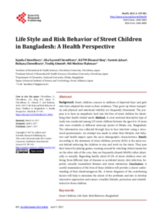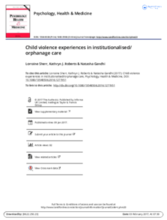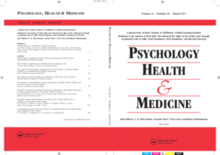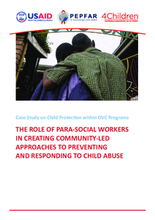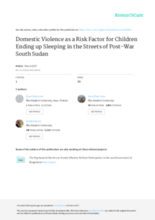Displaying 651 - 660 of 1070
The present study analyzes the risk factors responsible for the exposure of migrant and refugee children to physical, psychological, and sexual violence and exploitation in Greece in the context of the ongoing migrant humanitarian crisis.
This cross-sectional descriptive study found that poverty is the main reason children stay and work on the street.
This systematic review addresses violence and abuse experiences in institutionalised care, including frequency and type of abuse/violence, interventions addressing violence in institutional care, the perpetrators of violence, and the connections between abuse and cognitive delays in institutionalised children.
This editorial explores the experience and impact of childhood violence around the world and calls for a coordinated and multi-sectoral response to prevent violence, recognizing the need to identify and address the root causes of family separation and institutionalization.
The following case study outlines the process undertaken by officials, para-social workers (PSWs) and community leaders in several sub-counties in Kasese District in Western Uganda to a) identify and address instances of child abuse in their communities, b) track cases of abuse and encourage reporting by victims, and c) support a para-social workforce in the communities to act as a deterrent and reduce the incidence of abuse.
This Special Issue of the Journal of Psychology, Health and Medicine contains fifteen of several papers commissioned by the Know Violence Initiative. Together, these papers illustrate the complexity of violence experienced by children and present evidence-based strategies for addressing and preventing childhood violence.
Increasing evidence suggests that intimate partner violence (IPV) and child maltreatment (CM) by a parent or caregiver intersect on a number of levels. This scoping review defines the intersections between IPV and CM and explores opportunities for more coordinated approaches to address both forms of violence.
This review aims to identify features that adolescents experiencing neglect and/ or emotional maltreatment report.
The study investigated the life of children in the street in post-war South Sudan. A main objective was to examine whether children who slept in the streets although they had parents they could go home to had been victimised more from domestic violence than children working in the street by day but spending the nights at home.
This paper describes promising programs and strategies designed to prevent physical punishment by parents for each of three levels of intervention − indicated, selective, and universal − and summarizes the existing evidence base of each.


